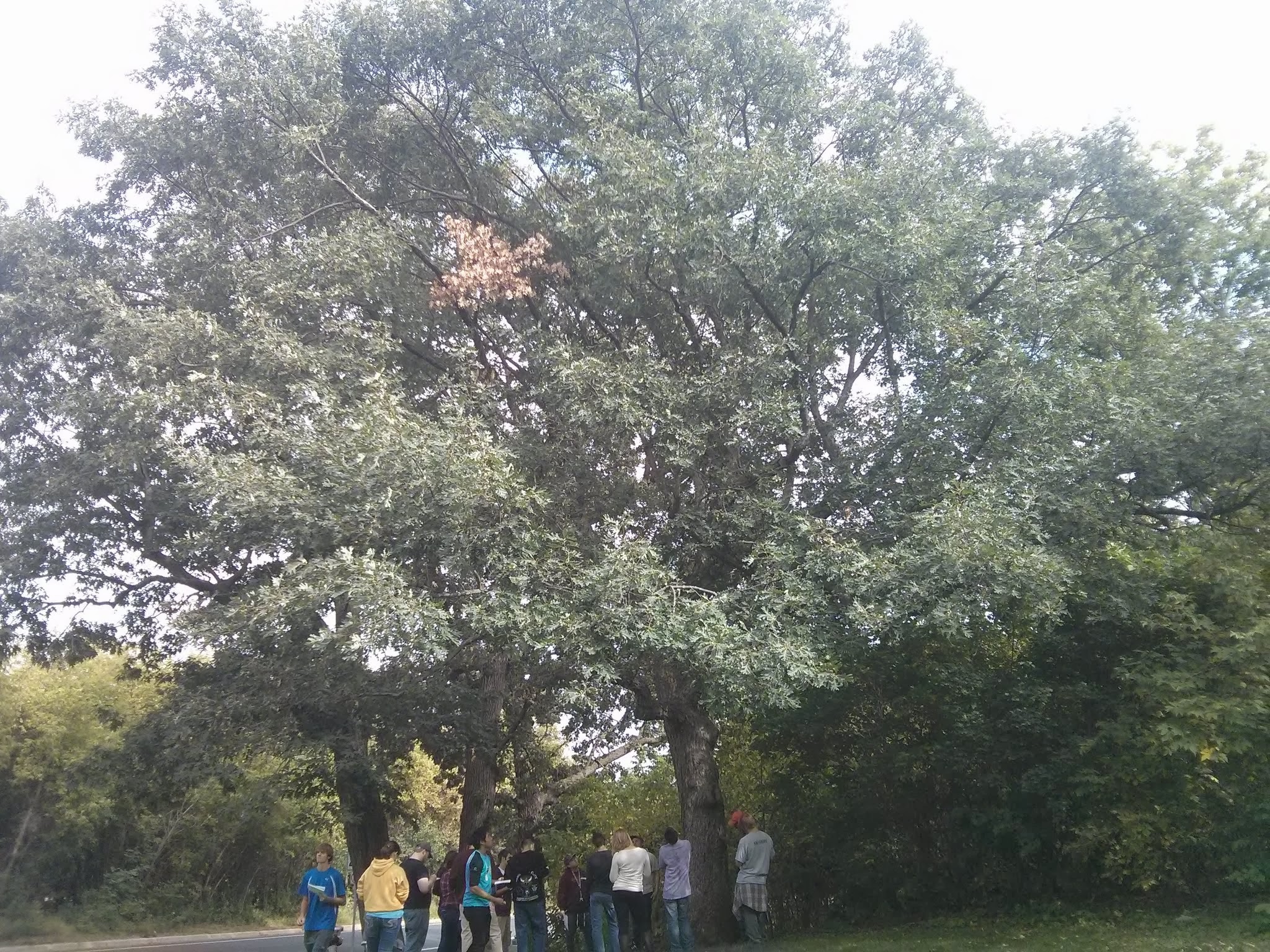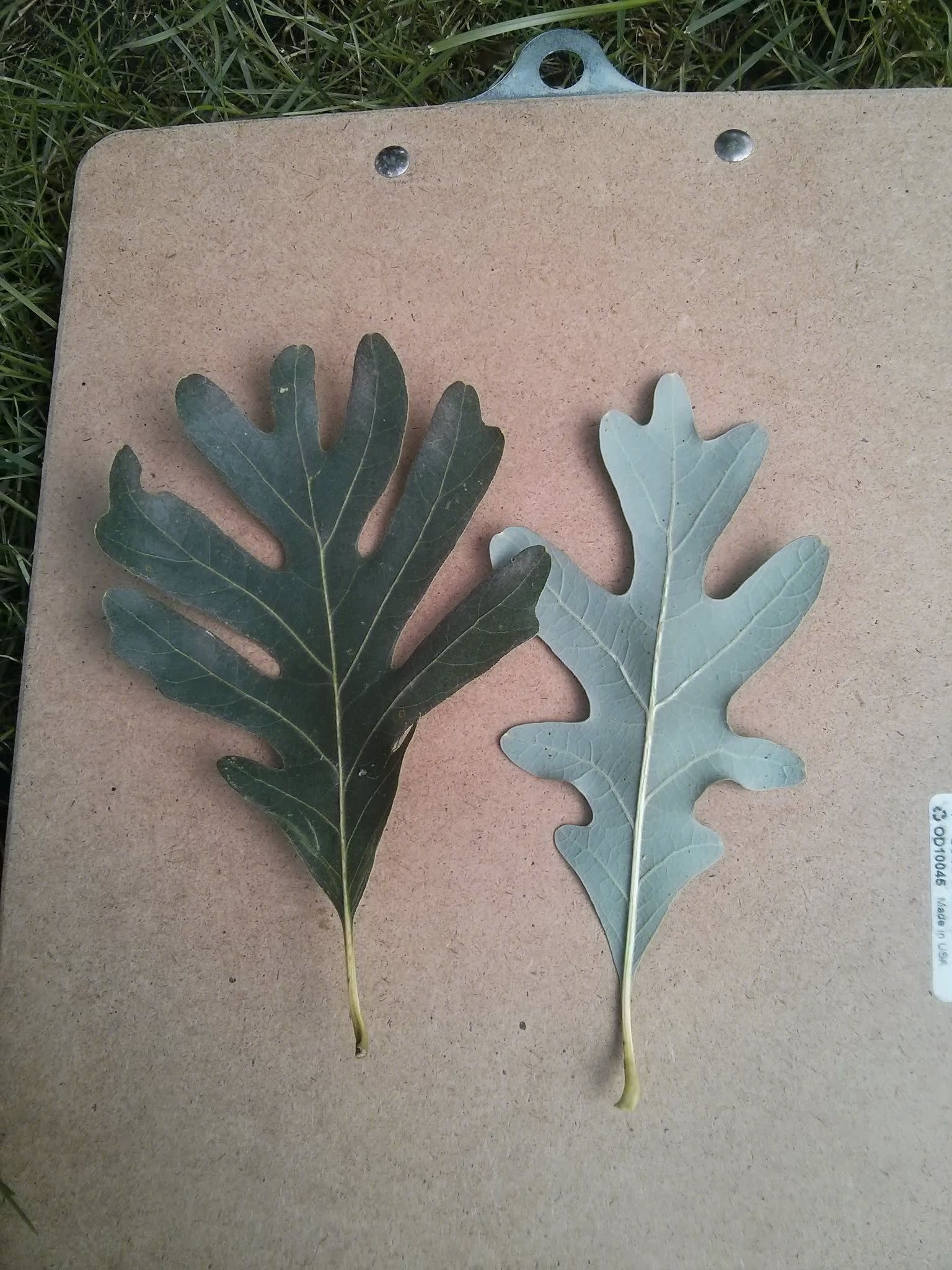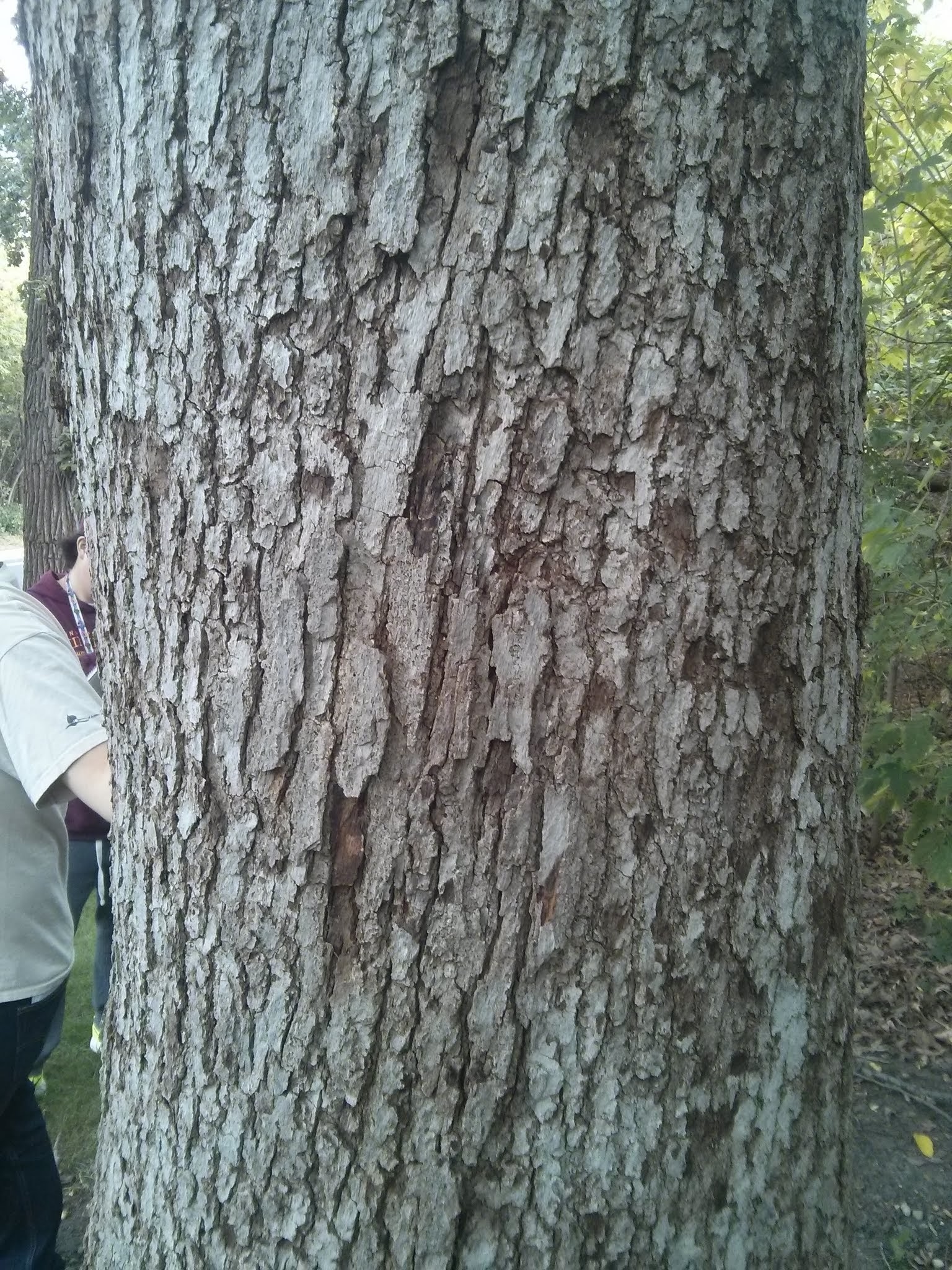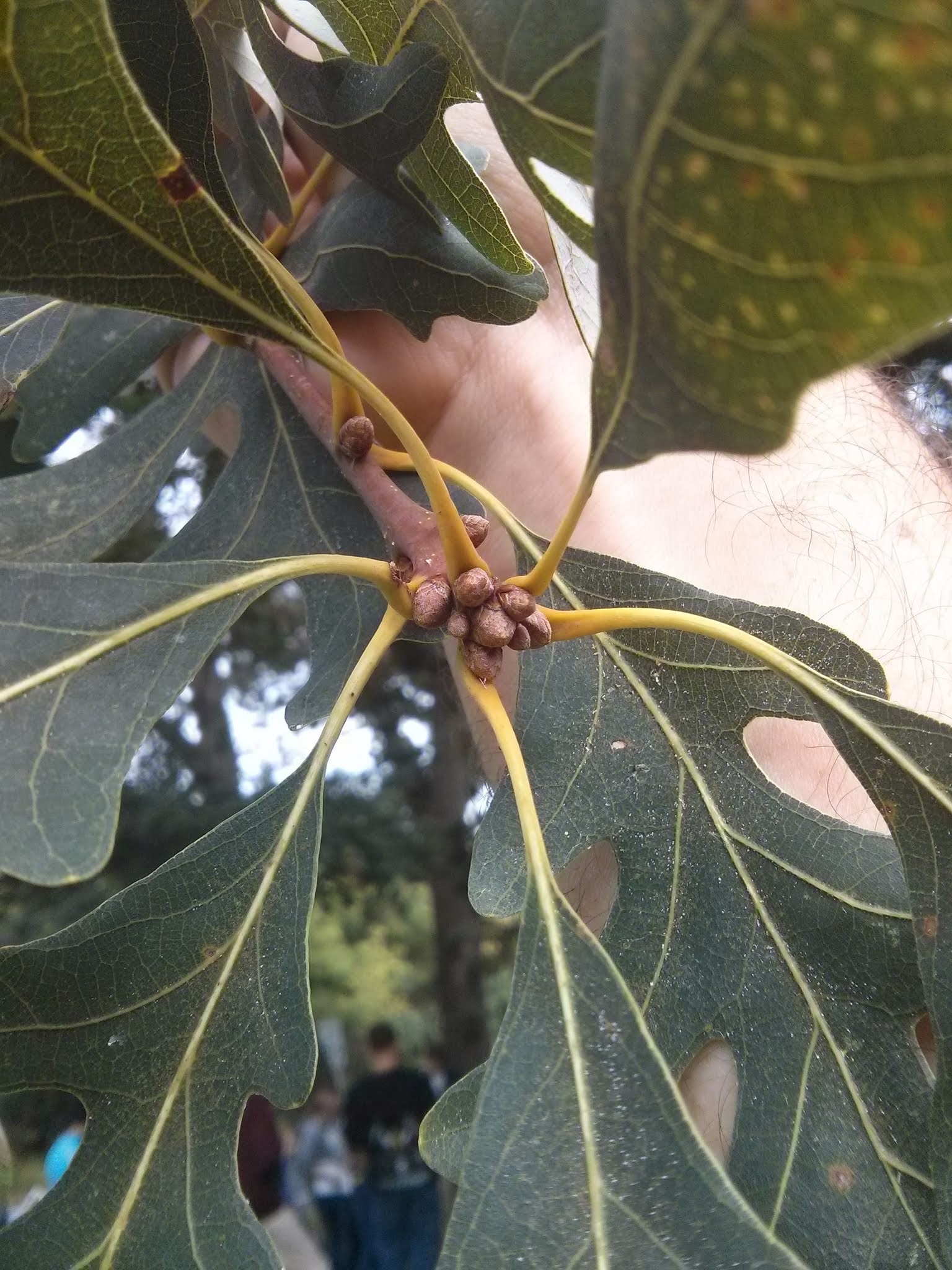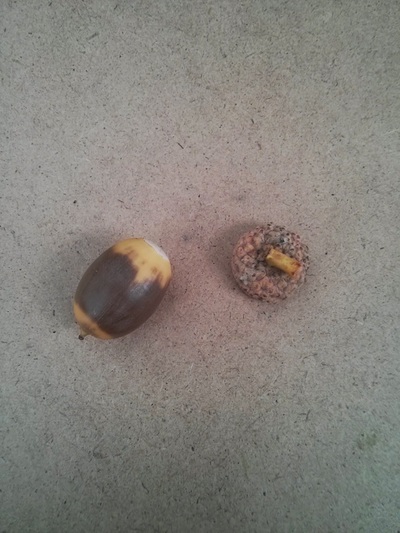Common Name: white oak
Scientific Name:
Family: Fagaceae
Genus: Quercus
Species: Q. alba
Hardiness Zone: 3 to 9
Height: 50 to 80 ft
Width: 50 to 80 ft
Common characteristics:
White oak (Quercus alba) is an important member of the white oak group due to its many uses in woodworking and as a food source for wildlife. The name "white oak" is said to come from the Native Americans. They noticed the characteristic white smooth bark patches that come from a fungal infection that causes "smooth patch" on these trees. The bark is pale gray with scaly ridges and shallow fissures. Leaves are simple, alternate on stem, length 5" to 9" and about half as broad. Growing crowded toward ends of twigs, deeply divided into five to nine fingerlike lobes. Leaves are a light green above and much paler green below that will turn red or brown in autumn, some remain on the tree most of the winter.
Where it grows:
White oak does not tolerate wet conditions and is best planted in well-drained sites with rich, moist, acidic loams in full sun. Oak pruning should be done in the dormant season to avoid attracting beetles that may carry oak wilt. The roots are sensitive to soil disturbances, such as compaction and construction. Intolerant to salt in the soil and salt spray.
How it’s used:
A long-lived species that is ideal as an ornamental shade tree. Planting in a park, yard or wide boulevard is best.
Ecosystem services:
Many birds and small mammals will utilize the white oak acorns as a food source as well as shelter.
Where it is native to:
Native to most of the Eastern United States.
Known Varieties and Their Traits:
Crimson SpireTM oak (Quercus 'Crimschmidt'): a hybrid between English oak (Quercus robur) and White oak (Quercus alba). It was selected for a narrow form (15 feet wide) and good red fall color. It is tolerant of a wide range of conditions
Streetspire® oak (Quercus robur x alba 'JFS-KW1QX'): A narrow, columnar cultivar growing 45 feet tall and only 14 feet wide; powdery mildew resistant; red fall color.
Problems:
Susceptible to oak wilt, anthracnose, and two-lined chestnut borer attack. Wasp galls and scale are potential problems as well.
References:
